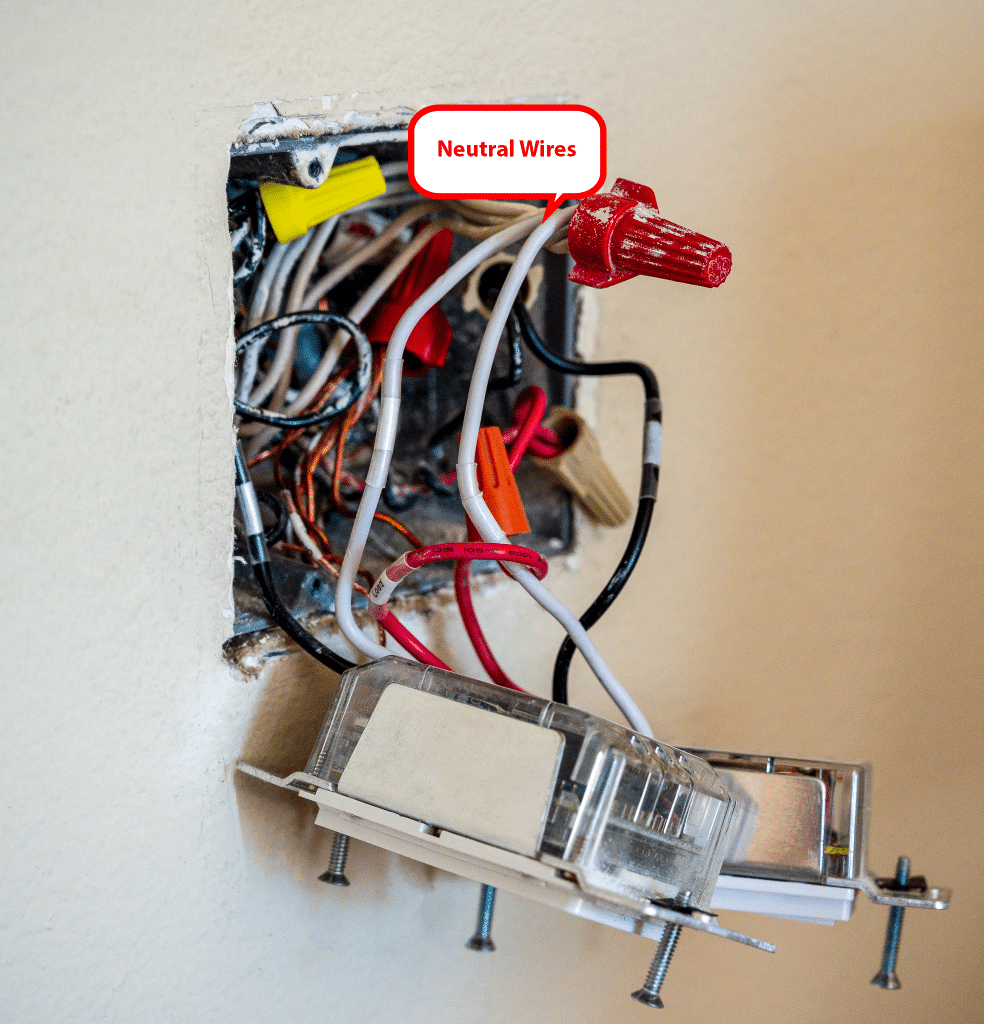
Crossing the neutral zone
Smart lighting controls remind me of classic Star Trek folklore. The Neutral Zone was a buffer area in space measuring one light year in width that separated the United Federation of Planets from the Romulans.
Crossing the Neutral Zone was considered an act of aggression and to be avoided at all cost.
The lack of an electrical neutral wire in our walls is the same kind of impenetrable barrier between no automation and smart home lighting controls that we want to use.
What is a neutral wire?
According to Wikipedia, “Neutral is a circuit conductor that normally completes the circuit back to the source. Neutral is usually connected to ground (earth) at the main electrical panel, street drop, or meter. It is also at the final step-down transformer of the supply. That is for simple single panel installations; for multiple panels the situation is more complex.”
Well that was clear as mud!
The typical high voltage (HV) wiring in a home consists of an insulated bundle of copper wire. Romex wire is named after the most popular brand name.
Romex wires have a hot, neutral, and ground which makes up the typical 3-wire HV cabling using throughout our homes. Older homes have only the hot and ground wire – missing the neutral wire.
Why is the neutral wire important for smart lighting controls?
Unlike a dumb wall switch which is simply opening and closing a connection (circuit) between two wires to turn the lights on and off, a smart-switch is a tiny computerized device.
Like every computer, the lighting control switch needs a power supply to operate. Whether the connected light (“load” in electrical lingo) is on or off, power must still flow to the smart-switch so it keeps operating and can maintain a connection to the rest of the control system.
With a regular dumb switch there isn’t any way for it to be powered itself.
When you install smart-switch, you must also connect it to the neutral wire to power it up.
This is done by connecting the smart-switch to all three wires – the hot, neutral, and the ground.


The neutral problem
Older homes do not have a neutral wire at all. Replacing dumb light switches with smart-switches is simply a no go.
Modern homes, fully wired with three-wire HV circuitry and properly grounded 3-prong outlets, should be a piece of cake. But they are also a challenge.
The wall boxes where light switches are located may not always contain a neutral wire. This is fairly common.
You really don’t know what you might be facing until you remove the wall-plate and inspect the wiring.
I want to remind you that I’m an engineer by training, but not an electrician. I work with a licensed electrician and never attempt to deal with any high-voltage installation or changes myself.
Please do your own research and rely on the expertise of a licensed electrician for your own projects.
Most DIY solutions require a neutral wire
The vast majority of smart-switches for lighting control require a neutral wire for installation.
You might be considering some of popular DIY products you online. Here’s a list and whether they need a neutral wire.
These are all dimmers, not switches. For an explanation of the difference, check this out.
No neutral wire needed
Caseta by Lutron – no neutral wire
RA2 Select by Lutron – versions with and without neutral wire
RA2 by Lutron – versions with and without neutral wire
Requires neutral wire
Wemo Dimmer – requires neutral wire
Kasa Smart Dimmer Switch – requires neutral wire
Leviton Decora Smart Wi-Fi Dimmer – requires neutral wire
IDevices Smart Dimmer – requires neutral wire
Have you spotted the pattern?
Except for Lutron, every single manufacturer listed, whether it is Bluetooth, Wi-Fi, Z-Wave or uses a proprietary interface, only works with a neutral wire connection.
For DIY, retrofit, new builds, or commercial systems, almost all major smart lighting controls require a neutral wire for operation. But not Lutron!
Don’t ignore this professional secret
If you have a neutral wire available in the wall junction box, you can still use it. Many Lutron switches and dimmers can be wired with or without the neutral wire.
Using the neutral wire can make the dimmer work better. There are many brands of bulbs and LEDs with varying quality and performance specs. The neutral wire makes it easier to dim some of those fixture down to lower levels without any flicker.
When given a choice, electricians prefer to install without using neutral wires.
As a skeptic you may think they simply like the expediency of one less connection per switch, but as an engineer I know that complexity is the source of all evil.
Every simplification you can make, whether it is one less wire, one less screw socket, one less pushed on lead you can avoid, the overall reliability and integrity of the system improves significantly.
The newest dimmers from Lutron – the PRO LED+
The Lutron PRO LED+ works with or without a neutral wire for most loads and is compatible with LED, compact fluorescents (CFL), magnetic low voltage (MLV), electronic low voltage (ELV), incandescent, halogen, dimmable florescent and a few specialty fixtures.
Depending upon the load, it can support forward or reverse dimming, and minimum loads of 1 or 2 bulbs and with dimming capability as low as 1%.
Over time it will probably replace most of the existing dimmers, but right now it is a great choice if you want to standardize on one specific product that will fit all possible uses that offsets the slightly higher price.
